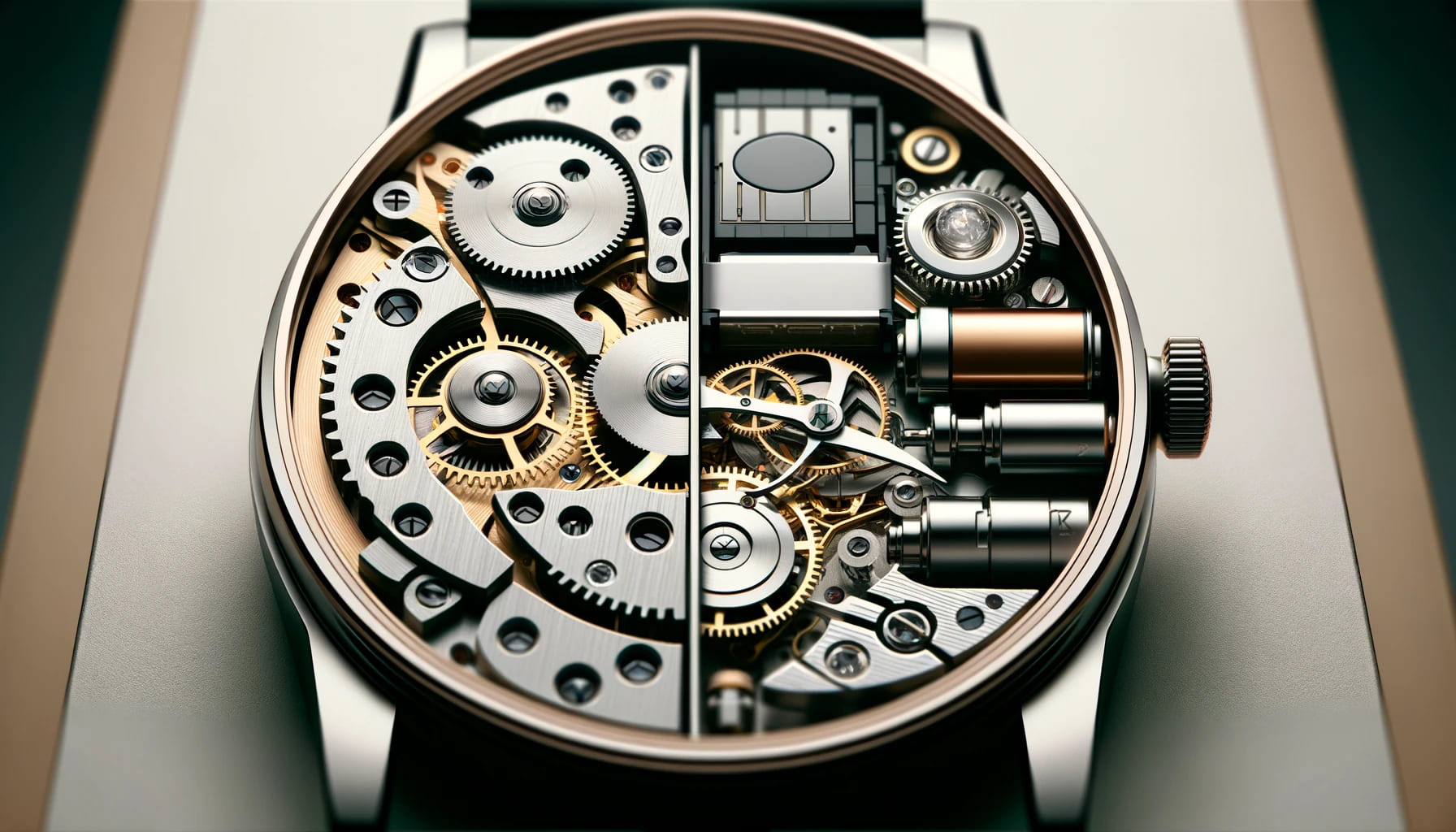The debate between mechanical and quartz movements in the world of luxury watches has been ongoing for decades. Each type of movement has its unique characteristics, strengths, and appeal. In this comprehensive guide, we’ll explore the differences between mechanical and quartz movements, delving into their history, functionality, and why watch enthusiasts often have strong preferences for one over the other.
Understanding Watch Movements
Before diving into the specifics of mechanical and quartz movements, it’s essential to understand what a watch movement is. A watch movement, also known as a “caliber,” is the mechanism that drives the hands and other functions of a watch. It can be considered the heart of the timepiece, determining how the watch keeps time and operates its additional features.
Mechanical Movements
Mechanical movements have a long history, dating back to the early days of watchmaking. They are powered by a mainspring, a coiled metal strip that stores energy when wound. The energy from the mainspring is released through a series of gears, which control the movement of the watch’s hands and any additional complications.
Manual Mechanical Movements
Manual mechanical movements require the wearer to wind the watch by hand, typically using the crown. This action tightens the mainspring, providing the energy needed to keep the watch running. Manual movements are prized for their craftsmanship and traditional feel, often attracting collectors who appreciate the tactile experience of winding their watches.
Automatic Mechanical Movements
Automatic mechanical movements, also known as self-winding movements, use a rotor that moves with the motion of the wearer’s wrist. This motion winds the mainspring, eliminating the need for manual winding. Automatic movements offer convenience and are popular in luxury watches, allowing for continuous operation with regular wear.
Advantages of Mechanical Movements
Mechanical movements offer several advantages over quartz movements:
- Craftsmanship: Mechanical movements are often hand-assembled and intricately designed, reflecting the artistry and skill of watchmakers.
- Longevity: Mechanical watches can last for generations with proper maintenance, often becoming family heirlooms.
- Aesthetics: The intricate gears and components of mechanical movements can be visually stunning, especially in watches with exhibition casebacks.
- Complications: Mechanical movements can incorporate various complications, such as chronographs, moon phases, and perpetual calendars, adding to their appeal.
Disadvantages of Mechanical Movements
While mechanical movements are revered for their craftsmanship, they do have some drawbacks:
- Maintenance: Mechanical watches require regular servicing to keep them in good working order.
- Accuracy: Mechanical movements are generally less accurate than quartz movements, with slight variations in timekeeping.
- Price: Mechanical watches tend to be more expensive due to the labor-intensive manufacturing process and craftsmanship involved.
Quartz Movements
Quartz movements revolutionized the watch industry in the late 20th century. These movements are powered by a battery and use a quartz crystal to regulate the timekeeping. The quartz crystal vibrates at a precise frequency when an electrical current passes through it, providing a highly accurate timekeeping mechanism.
Advantages of Quartz Movements
Quartz movements have several advantages that have contributed to their widespread popularity:
- Accuracy: Quartz movements are highly accurate, with minimal deviation in timekeeping over extended periods.
- Low Maintenance: Quartz watches require less maintenance compared to mechanical watches, typically only needing battery replacements.
- Cost-Effective: Quartz watches are generally more affordable due to their simpler manufacturing process and lower production costs.
- Lightweight: Quartz watches are often lighter than mechanical watches, making them more comfortable for everyday wear.
Disadvantages of Quartz Movements
Despite their advantages, quartz movements have some limitations compared to mechanical movements:
- Lack of Craftsmanship: Quartz movements lack the intricate gears and components that characterize mechanical watches, which may be less appealing to collectors.
- Battery Dependence: Quartz watches require battery replacements, which can be inconvenient and generate electronic waste.
- Limited Complications: Quartz movements are typically limited to basic timekeeping and simpler complications, lacking the complexity of mechanical movements.
Choosing Between Mechanical and Quartz Movements
When deciding between a mechanical and a quartz watch, consider your preferences and priorities. Here are some factors to help guide your choice:
- Purpose: If you value craftsmanship and tradition, a mechanical watch might be ideal. For those who prioritize accuracy and low maintenance, quartz watches are a better fit.
- Budget: Mechanical watches tend to be more expensive, so consider your budget when making a decision.
- Style: Mechanical watches often have a classic, timeless appeal, while quartz watches can offer a more modern look.
- Complications: If you’re interested in advanced complications, mechanical watches are the way to go. Quartz watches are typically simpler in terms of features.
- Maintenance: Consider your willingness to invest in regular maintenance. Mechanical watches require more attention, while quartz watches are generally low maintenance.
Both mechanical and quartz movements have their unique appeal and benefits. Mechanical watches are revered for their craftsmanship and tradition, often becoming cherished heirlooms. Quartz watches, on the other hand, offer superior accuracy and low maintenance, making them practical for everyday wear. Ultimately, the choice between mechanical and quartz movements depends on your preferences, budget, and intended use. Whichever you choose, you’re investing in a timepiece that reflects your style and personality.
